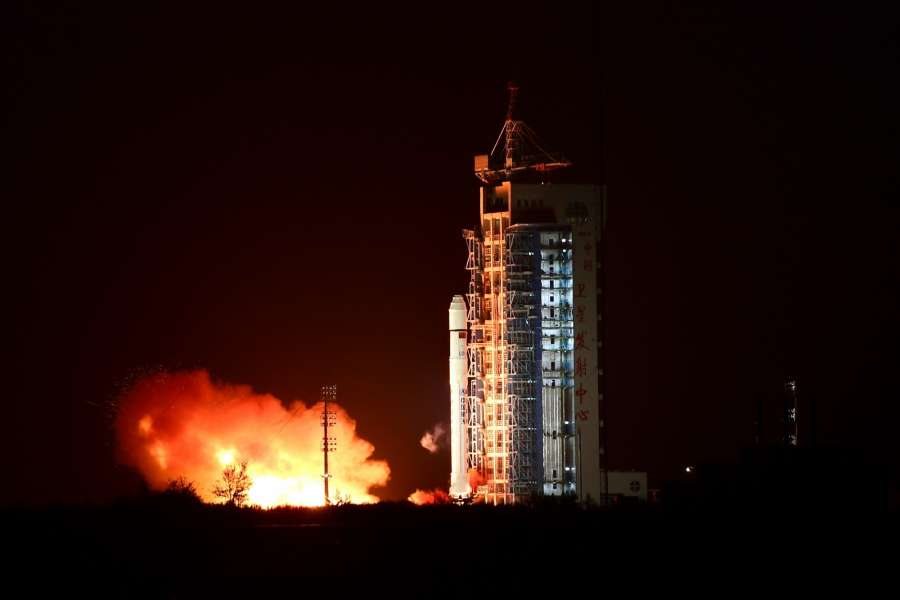
China Overtakes US In Tactically Responsive Space Launch (TRSL) Capabilities. Satellites play a pivotal role in advancing contemporary communication networks and supporting meteorological predictions. Comparable to other modern armed forces, the People’s Liberation Army (PLA) also incorporates satellite-dependent abilities into its strategic military framework. To directly challenge and vie with SpaceX’s Starlink network, the Chinese military has been actively advocating for the rapid establishment of a constellation comprising nearly 13,000 satellites in low-Earth orbit
Over the last five years, there has been a marked upsurge in China’s satellite launch activities, propelling the nation to possess the world’s second-most expansive space infrastructure, trailing only the United States. To directly challenge and vie with SpaceX’s Starlink network, the Chinese military has been actively advocating for the rapid establishment of a constellation comprising nearly 13,000 satellites in low-Earth orbit. Although the magnitude of this specific undertaking might be unexpected, it aligns with the swift progress seen in Beijing’s space sector.

Strikingly, China initiated its inaugural satellite launch in 1970; however, it’s noteworthy that nearly fifty per cent of all its space missions took place between 2017 and 2022. Within this period, a significant proportion of its satellites were successfully placed in orbit. Recent intelligence from the United States indicates that China has nearly twofold increased its overall number of satellites over the past “three to four years.” China’s remarkable strides in its space endeavours over recent years demand substantial recognition. Moreover, China’s impressive space advances during the past few years are hard to ignore, and with no signs of slowing, these accomplishments merit particular emphasis.
However, the most remarkable discovery comes from the US Center for Security and Emerging Technology (CSET), revealing that China seems to have surpassed the United States in the field of tactically responsive space launch (TRSL). Over the past few years, the US has vigorously advocated for achieving “tactically responsive” space launch capabilities, which involve placing a system into orbit at the pace dictated by battlefield conditions, departing from the conventional process that takes several years. The recent revelations by Georgetown University’s CSET serve as a cautionary note, indicating that the United States’ primary competitor has already gained a significant advantage in this competitive endeavour.
TRSL is the ability to speedily replace satellites damaged or destroyed in conflict or by accident. In contrast to the usually extended timeframes required for space launches, which can span months due to the intricate preparation procedures, a responsive launch under the TRSL concept aims to occur within a matter of days upon receiving directives. Furthermore, these launches should remain feasible even amid ongoing conflicts. Given the substantial reliance of the United States and Chinese military forces on satellite systems to execute contemporary warfare strategies, the nation capable of swiftly reinstating on-orbit functionalities would gain a significant edge in scenarios involving intense high-level conflicts.

Satellites play a pivotal role in advancing contemporary communication networks and supporting meteorological predictions. Comparable to other modern armed forces, the People’s Liberation Army (PLA) also incorporates satellite-dependent abilities into its strategic military framework. The PLA has engineered satellites that cater to positioning, navigation, and timing (PNT) services and capabilities for intelligence, surveillance, reconnaissance (ISR), communication, and preemptive missile alerts. As China’s reliance on space technology grows for economic and security applications, significant investments from Beijing are channelled into enhancing the robustness of its expanding space infrastructure. It includes developing systems resistant to potential attacks and establishing a deterrent against assaults targeting its satellite assets.
Measuring the complete extent of China’s space resilience presents challenges due to the scarcity of open-source data detailing specific satellite capabilities. Additionally, defining the concept itself is problematic since the United States and China are pursuing distinct strategies to enhance the resilience of their respective space infrastructures. The most recent report on China’s space activities, including satellite launches and orbital placements, indicates a growing strength within the nation’s space framework. China is strategically deploying its satellites across a diverse range of orbital zones, intensifying the complexity involved in disrupting its space systems for potential adversaries. This strategic move enhances the probability of China’s ability to continue leveraging space-enabled technologies even in the face of attacks aimed at undermining its space architecture.


